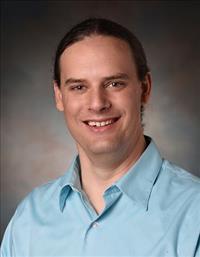Timothy Brick

ICDS Faculty Co-Hire
University Park, PA 16802
I am interested in the way that humans interact with their environment and more specifically with each other, the way those interactions change and are changed by our internal states, and how an understanding of those processes can help us nudge people towards thriving. I take a specific interest in a couple of complicated cases where these factors matter, like dyadic and multi-adic cases of parent/child interaction or education, and cases where individual thriving is intricate, like in recovery from substance abuse, across aging, or when living with Autism spectrum conditions.
But you can't understand how, for example, the process of drug addiction recovery plays out over a decade by bringing people into the lab for the occasional cognitive test. Instead, my Real Time Science Lab is focused on building tools to expand our knowledge about people while they live their lives, so we can see how these interactions play out in real time and in real life.
To do that, we need to revamp the ways we collect and store data, so that we minimize risk to participants and the burden that our data collection places on them. We need to update the statistical tools we use to analyze them and the experimental methods we use so that we can disentangle all the complexity of context and individual difference, and start to understand the processes that unfold moment-to-moment, day-to-day, and week-to-week.
To collect data in real time, we try to use low-burden, continuous-time data collection tools like GPS sensors and wearable heart rate monitors, and combine that with smartphone-based survey tools using our newly-developed Wear-IT framework. Our goal is to use those passive tools to figure out when and what to ask, so that people can give us the information we need without spending all day answering survey questions.
Once we have the data, analysis is another big issue. I've been working to build up tools for data analysis like OpenMx and to expand the use of data mining tools in the behavioral sciences, so that we can push the limits of what we can do with the data that we have. The goal is to build up ways to do data analysis in real time as the data streams in, expanding and tuning our models as the data is being collected, in order to optimize the way we do science and improve the way we do interventions.
All this data also incurs a burden in the form of risk. That is, as long as I'm in charge of keeping your data for you, there's a risk that your privacy is breached. The MID/DLE project for distributed privacy tries to tackle that problem by inverting the whole data collection paradigm. We start from the simple idea that maybe you should own your own data and build up to a place where we can run analyses on your data without ever actually seeing your data.
We're hoping that the approaches, methods, and tools that we're developing will not only help us with the specific targets we've started with, but will help push the limits of what the behavioral and health sciences can do to model and intervene into individual behavior now and into the future.
- Methodology
- Structural equation modeling
- Affect across the lifespan
- Dynamics of conversational interaction
- Computer vision
- Interactive avatars
- Use and management of scientific data
- Data mining in the social sciences
